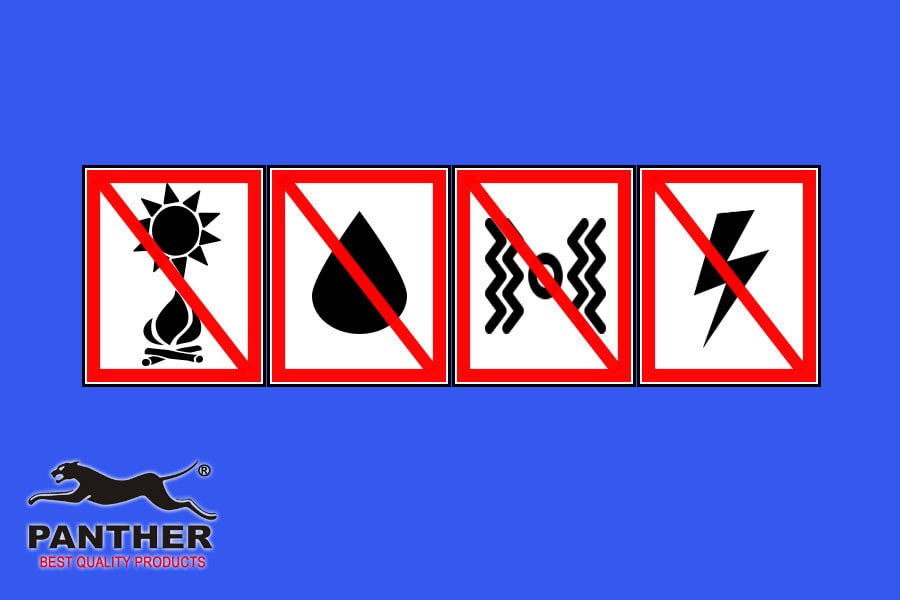
Table of Contents
Charging batteries is a routine task for many of us, but it can pose potential hazards if not done correctly. Overcharging, short circuits, and other hazards can cause damage to both the battery and the battery charger. At worst, it can even lead to injury or property damage. As such, in this article, we’ll provide you with a guide on how to safely and effectively charge batteries.
Choose the right charger
The first step to safe battery charging is to choose the right charger for your battery. Not all chargers are created equal, and using the wrong one can cause overcharging or other hazards. Always use a charger that is recommended for your specific battery type and capacity. Note that using a charger with the wrong voltage or amperage can damage the battery or even cause it to overheat or catch fire.
If in doubt, you can check out this article where we share how to check battery charger specifications to see if it is suitable for your battery.
Don’t mix battery types or capacities
Avoid mixing different types or capacities of batteries when charging, as this can cause overcharging, short circuit or other hazards. Always charge batteries of the same type and capacity together. For example, if you are charging two 12V batteries together (using a 24V Battery Charger), make sure these two batteries are always used in series together and therefore are in the exact same battery conditions. Otherwise, charging one battery that’s damaged with another battery in good condition could cause damage to the “good” battery
Monitor the charging process
It’s important to monitor the charging process to avoid overcharging, which can damage the battery and pose a potential hazard. Many modern chargers nowadays have built-in safety features such as automatic shut-off or LED indicators to signal when the battery is fully charged, or they utilize float charging to maintain the charge level without risk of overcharging. If your charger doesn’t have these features, be sure to monitor the charging process closely and remove the battery once full.
To make it easy for you, you can use our handy Panther Battery Charger chart below to determine the charging time needed given which Panther Battery Charger you purchased (since they have varying charger ratings) and the specific battery type

Prevent short circuits
Short circuits can occur for multiple reasons. Below we’ll list out common examples and what you can do to avoid them
- When battery terminals come into contact with conductive materials, this can cause the battery to discharge rapidly and potentially cause a fire. To avoid this, always make sure the battery is properly seated in the charger and that the terminals are not touching any conductive materials.
- Short circuits can also occur when the positive and negative terminals are connected to a low-resistance conductor. Make sure your battery clips are not rusted, so they are able to conduct electricity efficiently.
- Check the condition of the battery before charging. Make sure that the battery is not leaking or damaged in order to prevent short circuits.
- Lastly, always make sure that you are using the right charger for your battery. Using a battery charger with the wrong voltage and current rating can easily cause a short circuit
Mitigate risk of electric shock
Unless explicitly stated to be allowed, make sure that power is switched off before making any battery connection or disconnections. This is especially true if you are connecting your battery charger to a vehicle battery.
Keep your workplace dry when working with electricity. You must also keep your hands dry before touching the electrical parts of the battery or charger.
Charge in a safe location
Always charge your battery in a safe location, away from flammable materials and sources of heat or moisture. Likewise, do not install in a location that is subject to excessive vibration or has risk of electric shock. Make sure to provide adequate ventilation also to prevent overheating.

In conclusion, charging batteries safely is a critical task that requires careful attention to detail and best practices.
- Choose the right charger
- Don’t mix battery types or capacities
- Monitor the charging process
- Prevent short circuits
- Mitigate risk of electric shock
- Charge in a safe location
By following these guidelines, you can ensure safe and effective charging for your batteries, and avoid potential hazards or damage to your devices.




0 Comments